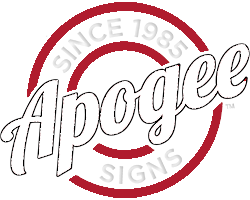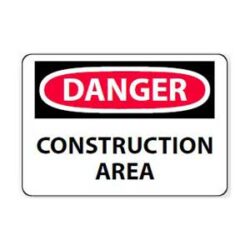
Construction signs are indispensable elements of any job site, serving as crucial tools for ensuring safety and security. These unassuming visual cues play a vital role in conveying essential information, guiding workers, and alerting visitors to potential hazards. From vivid “Hard Hat Area” signs that demand protective headgear to the unmistakable “No Entry” symbols designating restricted zones, construction signs communicate a language of caution and responsible practices.
Within the ever-evolving landscape of construction, these signs act as silent guardians, standing as beacons of guidance and protection. Each sign holds a specific meaning and purpose, addressing different aspects of safety and site management. Understanding the significance of these visual aids empowers everyone present on the job site, from experienced professionals to curious passersby, to navigate the construction environment with heightened awareness and confidence.
In this comprehensive guide, we embark on a journey to explore the language and importance of construction signs. Discover their meanings, learn about strategic placements, and grasp their pivotal role in fostering a culture of safety. Together, let us unravel the mysteries of these essential visual cues, embracing their power to ensure a secure and informed construction experience for all stakeholders. Join us as we venture behind the barricade to unlock the keys to construction site safety and embark on a safer, more productive construction journey.
These visual cues below serve as crucial tools for promoting safety, guiding workers, and protecting all individuals present on the job site. Explore the various construction signs and their significance, empowering yourself with the knowledge to navigate the construction environment with confidence and vigilance.
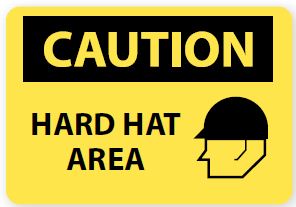
- Hard Hat Area: This sign is crucial in areas where there is a risk of falling objects, debris, or potential head injuries. It reminds workers and visitors to wear hard hats before entering the designated zone to protect themselves from head injuries. These signs should be placed at the entrances to areas where there is a risk of falling objects or head injuries, such as areas with overhead work, crane operations, or demolition activities. The signs should be yellow background with black text and a pictogram of a person wearing a hard hat and is generally rectangular or diamond shaped.
- High-Visibility Vest Area: Construction sites often have areas where visibility is critical for safety, such as areas with heavy equipment or moving vehicles. The high-visibility vest sign indicates that anyone entering the zone must wear brightly colored vests to enhance their visibility and reduce the risk of accidents. These signs should be located at the boundaries of areas where visibility is critical, such as zones with heavy machinery operation or vehicle traffic. They can also be placed near entry points to the construction site to remind everyone to wear high-visibility vests upon entry. The high visibility vest sign should be yellow-green or orange background with black text and a pictogram of a person wearing a high-visibility vest and is rectangular or diamond-shaped.
- Construction Site Keep Out: This sign is posted at the perimeter of the construction site to warn unauthorized personnel and the public that access is restricted. It helps prevent accidents, theft, and liabilities that may arise from individuals entering hazardous areas without proper authorization. These signs are typically posted along the perimeter fencing or barricades of the construction site to clearly indicate that unauthorized access is prohibited. The color of this type of sign should be red or red and white stripes for maximum visibility, with white text and should be rectangular or square.
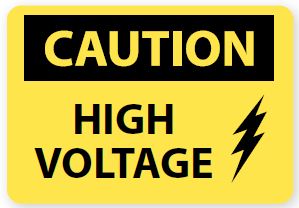 Danger/Caution Signs: These signs are used to alert people to specific hazards present in the area. For example, a “Danger: High Voltage” sign would warn about the risk of electrocution, while a “Caution: Slippery Surface” sign would caution against potential slip and fall accidents. These signs should be placed near the specific hazards they warn about. For example, a “Danger: High Voltage” sign should be near electrical panels or equipment, while a “Caution: Slippery Surface” sign should be near areas that are prone to water accumulation or spills. A yellow background with black text and/or symbols for caution signs, red and white for danger signs is the color combination for this type of sign. The danger signage is typically diamond-shaped for caution signs and rectangular or square for danger signs.
Danger/Caution Signs: These signs are used to alert people to specific hazards present in the area. For example, a “Danger: High Voltage” sign would warn about the risk of electrocution, while a “Caution: Slippery Surface” sign would caution against potential slip and fall accidents. These signs should be placed near the specific hazards they warn about. For example, a “Danger: High Voltage” sign should be near electrical panels or equipment, while a “Caution: Slippery Surface” sign should be near areas that are prone to water accumulation or spills. A yellow background with black text and/or symbols for caution signs, red and white for danger signs is the color combination for this type of sign. The danger signage is typically diamond-shaped for caution signs and rectangular or square for danger signs.- Safety First: This sign serves as a general reminder to prioritize safety on the construction site. It encourages everyone to be vigilant, follow safety protocols, and report any unsafe conditions or practices. This sign can be placed at various locations throughout the construction site to serve as a general reminder to prioritize safety. High-traffic areas like main access points or near break areas are suitable locations. The signs generally have a green background with white text and/or symbols and are rectangular or square in shape.
- Emergency Assembly Point: In case of an emergency or evacuation, this sign indicates the designated location where workers should gather to ensure a headcount and facilitate communication with emergency responders. This sign should be placed in a clear and easily accessible location away from potential hazards, making it easy for everyone on the site to gather quickly in case of an emergency. These signs have a green background with white text and a pictogram of people assembling and are usually rectangular or square in shape.
- Fire Extinguisher Location: Construction sites may have multiple fire extinguishers placed strategically. This sign helps workers locate fire extinguishers quickly in case of a fire emergency. These signs should be mounted above or beside fire extinguishers to indicate their presence and make them easily identifiable in case of a fire emergency. Usually, these types of signs are red background with white text and a pictogram of a fire extinguisher and
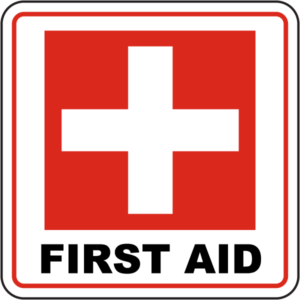 are rectangular or square.
are rectangular or square. - First Aid Station: This sign points to the location of the first aid station or medical facilities on the construction site, allowing individuals to seek immediate medical attention for injuries or illnesses. This sign should be posted prominently near the first aid station or medical facilities to guide individuals seeking medical attention. These types of signs are on a green background with white text and a pictogram of a first aid kit or medical cross symbol. Usually, they are rectangular or square in shape.
- No Smoking: Smoking on construction sites can be highly dangerous due to the presence of flammable materials and potential gas leaks. This sign indicates that smoking is prohibited in the area to reduce fire hazards. These signs should be displayed at various locations throughout the construction site, especially in areas where flammable materials are stored or used. This sign is found not only in construction site but universally located in other public places and has a red circle with a diagonal line across a black symbol of a cigarette or smoke.
- Exit Signs: Clear and well-marked exit signs help workers and visitors quickly find their way out of the construction site in the event of an emergency. Exit signs should be placed above all designated exits, ensuring they are clearly visible and well-lit. These signs are green with white text and a pictogram of a person running towards an exit generally they are rectangular, with an arrow indicating the direction of the exit.
- Authorized Personnel Only: This sign restricts access to areas that may be dangerous or contain sensitive materials. Only individuals with proper authorization, such as workers and supervisors, should enter these zones. These signs are typically placed at access points to restricted areas, such as control rooms, equipment storage, or hazardous material storage. Usually blue or black text on a white background and rectangular or square in shape.
- PPE (Personal Protective Equipment) Required: Different areas of the construction site may require specific personal protective equipment, such as safety goggles, gloves, or ear protection. This sign informs individuals of the necessary PPE to enter the area safely. These signs should be located at the entrances to areas that require specific PPE, such as safety glasses, gloves, or hearing protection. Need PPE, look for blue or black text on a white background with a pictogram of the specific PPE required and is generally rectangular or square.
- Construction Zone Speed Limit: If construction activities are taking place near roads or areas with vehicular traffic, this sign notifies drivers of a reduced speed limit to ensure the safety of workers and drivers alike. Speed limit signs should be positioned along roadways and access routes within the construction site to notify drivers of the reduced speed limit. Usually, these signs are orange or black text on a white background and rectangular or square in shape.
 Barricade Tape and Fencing: These are physical barriers marked with caution stripes or warning messages. They help block off hazardous areas, such as open excavations or unstable structures, preventing unauthorized entry and reducing the risk of accidents. Barricade tape and fencing should be used to physically block off hazardous areas, and the tape should be visible at a height that people can easily see. Usually, these signs are yellow with black text for caution messages and are generally tape is ribbon-shaped, and fencing can be rectangular or diamond-shaped.
Barricade Tape and Fencing: These are physical barriers marked with caution stripes or warning messages. They help block off hazardous areas, such as open excavations or unstable structures, preventing unauthorized entry and reducing the risk of accidents. Barricade tape and fencing should be used to physically block off hazardous areas, and the tape should be visible at a height that people can easily see. Usually, these signs are yellow with black text for caution messages and are generally tape is ribbon-shaped, and fencing can be rectangular or diamond-shaped.- Construction Vehicle Signs: Construction sites often have large vehicles moving around, which can pose a threat to pedestrians and drivers. These signs warn people about the presence of construction vehicles and remind them to stay alert and cautious. These signs can be placed at the entrances to construction vehicle traffic routes and work zones to alert pedestrians and other drivers to be cautious. These signs usually have black text on a yellow background, often with a pictogram of a construction vehicle and rectangular or diamond shaped.
- Load Capacity Signs: Posted on scaffolding, elevated platforms, and equipment, these signs indicate the maximum load they can support. This information is critical to preventing overloading accidents and ensuring worker safety at elevated work sites. Load capacity signs should be posted on scaffolding, elevated platforms, and equipment, making them clearly visible to workers using the structures or machinery. These signs are black text on a yellow background and rectangular or square shaped.
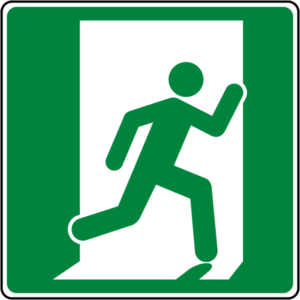
In conclusion, construction site signs play a pivotal role in upholding safety standards and fostering a secure work environment. From the unmistakable “Hard Hat Area” signs reminding us to protect our heads to the vibrant “No Smoking” symbols cautioning against fire hazards, each sign serves as an indispensable communicator of vital information and potential dangers. Placed strategically throughout the site, these signs guide workers, and visitors alike, promoting awareness and responsible practices.
As construction professionals, visitors, or passersby, we share a collective responsibility for safety. Embracing the significance of these signs empowers us to create an environment where construction can thrive without compromising the well-being of those involved. By adhering to safety protocols, conducting regular sign inspections, and promptly addressing maintenance needs, we ensure that these vital visual aids remain visible and effective throughout the duration of the project.
In the symphony of construction, let us remember that these signs are not mere adornments but indispensable tools in the pursuit of a safer and more successful construction process. With a shared commitment to safety and a constant awareness of these signposts, the construction industry can continue making a positive impact, creating lasting structures that stand tall as testaments to human endeavor and safety-conscious practices.
